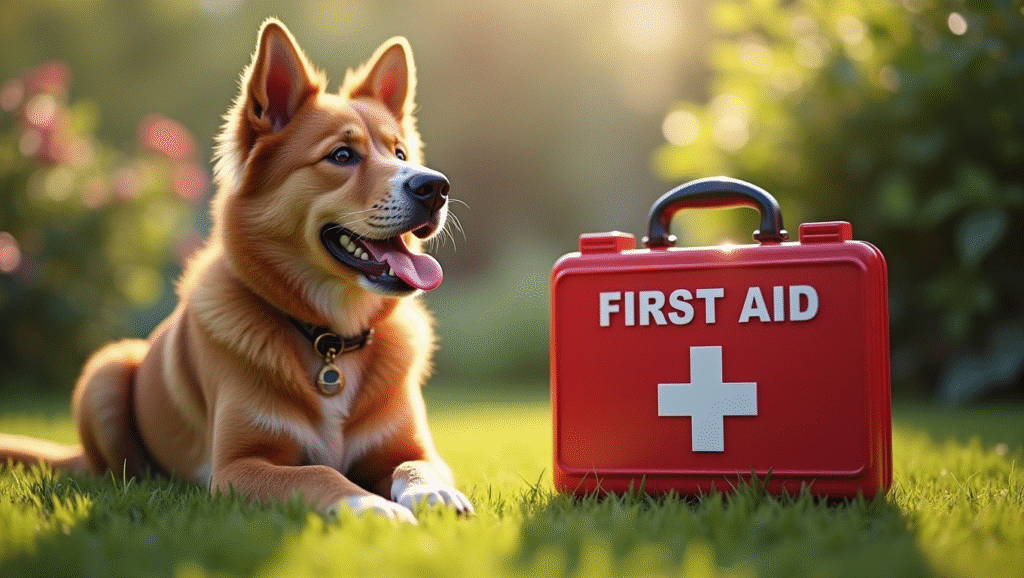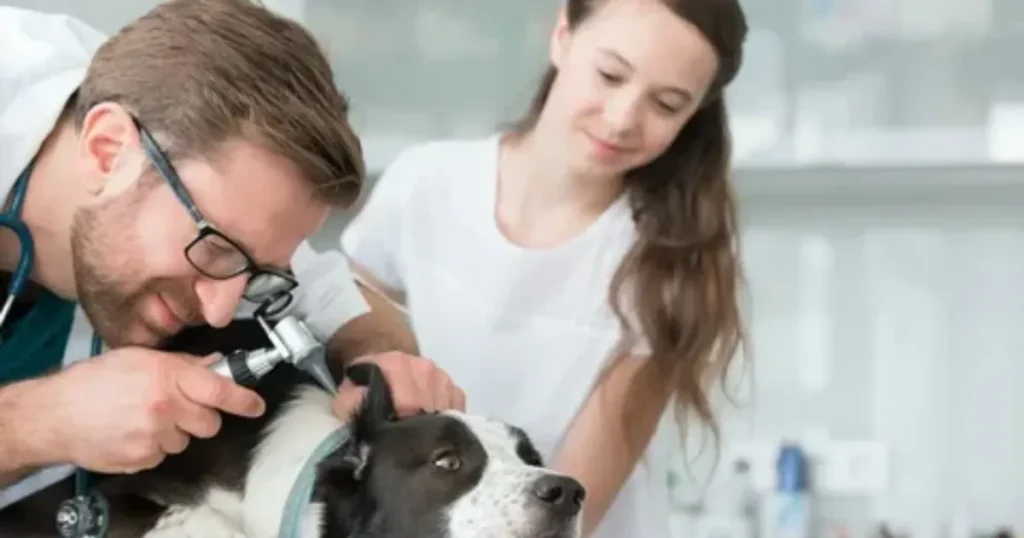The Essential Guide to Dog First Aid is here to help you be ready for anything that might happen to your furry friend.
Accidents can happen in a flash, and knowing how to respond can make all the difference.
Whether it’s a minor scrape or a life-threatening emergency, you’ll learn about the right supplies, how to handle common injuries, and even the steps for dog CPR.
Plus, we’ll chat about when it’s time to call the vet and where you can get dog first aid training. Let’s dive in!
Key Insights
- Know basic signs of dog injuries or illnesses.
- Always have a first aid kit for your dog.
- Stay calm during any emergency.
- Learn how to perform CPR on dogs.
- Call your vet if you’re unsure what to do.
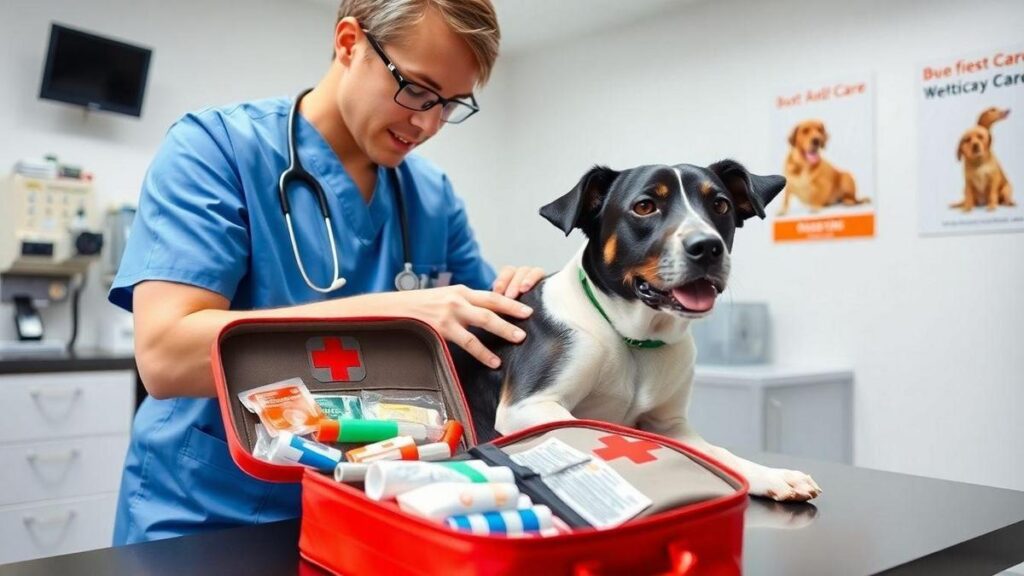
Summary
What is Dog First Aid and Why is it Important?
Dog first aid is all about taking quick action when your furry friend gets hurt or falls ill. Just like humans, dogs can face emergencies that need immediate attention. Whether it’s a cut, a bee sting, or something more serious, knowing how to respond can make a huge difference.
Imagine you’re out on a walk, and your pup suddenly steps on something sharp. They might yelp, and you need to act fast. Having a basic understanding of dog first aid can help you keep your dog safe and calm during such situations. It’s not just about knowing what to do; it’s also about being prepared.
Why is it important? Well, dogs can’t tell us when they’re in pain or feeling unwell. They rely on us to notice the signs and take action. Plus, being prepared can save you time and stress. Instead of panicking, you can calmly assess the situation and provide the necessary care.
So, whether you’re a new dog owner or have been around dogs for years, understanding first aid is crucial. It empowers you to take care of your buddy when it matters most. For more insights, explore the importance of being prepared for any canine emergency.
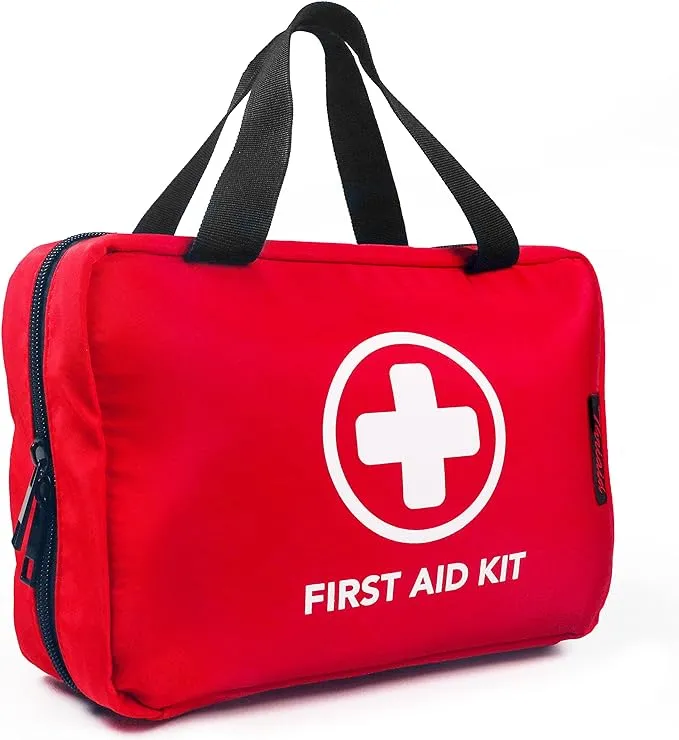
The Essential Guide to Dog First Aid: Key Supplies for Your First Aid Kit
When it comes to dog first aid, having the right supplies on hand can be a lifesaver. So, what should you include in your first aid kit? Here’s a handy list to get you started:
- Gauze and Bandages: Essential for covering wounds and stopping bleeding.
- Adhesive Tape: Use this to secure bandages in place.
- Antiseptic Wipes: Great for cleaning wounds before you bandage them.
- Tweezers: Handy for removing splinters or ticks.
- Scissors: Useful for cutting tape, gauze, or even hair if needed.
- Thermometer: A dog’s normal temperature ranges from 101 to 102.5°F. Keeping one handy helps you check for fever.
- Muzzle: Even the sweetest dog can bite when they’re in pain. A muzzle can keep you safe while you help them.
- Cold Pack: Perfect for reducing swelling from injuries.
- Hydrogen Peroxide: Can be used to induce vomiting in certain situations (but only under the guidance of a vet).
- Emergency Contact Numbers: Have your vet’s number and an emergency animal clinic’s number easily accessible.
You can buy pre-made kits, but it’s often better to customize your own based on your dog’s needs. Don’t forget to check your kit regularly to ensure everything is up-to-date and in good condition. For a detailed list of essential items, refer to the top 10 essential items for a dog first aid kit.
Common Dog Injuries and How to Handle Them
Dogs can get into all sorts of trouble, leading to various injuries. Here are some common ones and how to handle them:
- Cuts and Scrapes: If your dog gets a cut, the first step is to clean it. Rinse the area with clean water and use antiseptic wipes. Apply gauze and secure it with tape. Keep an eye on it for signs of infection, like redness or swelling.
- Burns: Burns can happen from hot pavement, chemicals, or even fire. Cool the area with running water for at least 10 minutes. Don’t apply ice directly, as it can cause more damage. Cover with a clean cloth and seek veterinary care.
- Sprains and Strains: If your dog is limping, they might have a sprain. Keep them calm and limit movement. You can apply a cold pack to reduce swelling. If the limping continues, it’s best to see a vet.
- Insect Bites or Stings: If your dog gets stung, look for swelling or redness. You can apply a cold pack to soothe the area. If they show signs of an allergic reaction, like difficulty breathing, get to a vet immediately.
- Choking: If you think your dog is choking, check their mouth for any visible obstruction. If you can’t see anything, you might need to perform the Heimlich maneuver. It’s a bit tricky, so it’s worth watching a video or taking a class to learn the right technique.
Being familiar with these common injuries and knowing how to respond can help you feel more confident in an emergency. Plus, your dog will appreciate your quick thinking! For more tips on handling emergencies, check out quick solutions for emergencies.
Dog CPR: A Step-by-Step Guide
Knowing how to perform CPR on your dog can be a game-changer in an emergency. Here’s a simple step-by-step guide to help you through the process:
- Assess the Situation: First, make sure your dog is unresponsive. Gently shake them and call their name. If there’s no response, check for breathing.
- Check for Breathing: Put your ear near their mouth and watch their chest. If they’re not breathing, you need to act fast.
- Positioning: Lay your dog on their right side on a flat surface. This position allows for easier access to their heart.
- Chest Compressions: Locate the heart, which is just behind the elbow on the left side. Using your palm, push down hard and fast, about 100-120 compressions per minute. If your dog is small, use two fingers instead.
- Rescue Breaths: After every 30 compressions, give two rescue breaths. Close their mouth and breathe into their nose until you see their chest rise. Each breath should last about 1 second.
- Continue the Cycle: Keep alternating between compressions and rescue breaths until help arrives or your dog starts breathing on their own.
It’s important to remember that CPR is a last resort and should only be done when absolutely necessary. Taking a dog first aid and CPR class can give you more practice and confidence in these situations. Consider exploring easy ways to learn dog first aid to enhance your skills.
Recognizing Dog Health Emergencies: When to Call the Vet
Sometimes it can be tough to tell if your dog needs a vet. Here are some signs that indicate it’s time to make that call:
- Difficulty Breathing: If your dog is struggling to breathe, it’s a serious issue. This needs immediate attention.
- Persistent Vomiting or Diarrhea: If your dog can’t keep anything down for more than 24 hours, or if they’re having severe diarrhea, it’s time to consult a vet.
- Seizures: If your dog has a seizure, it can be scary. Even if it’s a one-time event, you should contact your vet to rule out any underlying issues.
- Bloated Stomach: A swollen belly can indicate bloat, which is life-threatening. If you notice this, get to the vet right away.
- Injuries from Accidents: If your dog has been hit by a car or suffered a serious fall, don’t wait. Get them checked out immediately.
- Behavior Changes: If your dog suddenly becomes lethargic, hides, or seems unusually aggressive, it could be a sign of pain or illness.
Being aware of these signs can help you act quickly when it matters most. Trust your instincts; if something feels off, don’t hesitate to reach out to a professional. For further guidance, refer to the ultimate guide on how to act in dog emergencies.
Pet First Aid Tips Every Dog Owner Should Know
Here are some quick tips that every dog owner should keep in mind:
- Stay Calm: Dogs can sense your stress. If you stay calm, it’ll help them feel more at ease during an emergency.
- Know Your Dog’s Medical History: Keep a record of your dog’s medical history, including vaccinations and any previous health issues. This info can be super helpful for your vet.
- Practice Makes Perfect: It’s one thing to read about first aid, but practicing can make a big difference. Consider taking a first aid class or watching instructional videos.
- Have a Plan: Know where your nearest vet and emergency animal clinic are located. In a crisis, you don’t want to waste time searching.
- Keep Your Supplies Updated: Regularly check your first aid kit to make sure everything is in good condition and replace any expired items.
- Educate Others: If you have family members or friends who take care of your dog, make sure they know the basics of dog first aid, too.
These tips can help you feel more prepared and confident when it comes to your dog’s health. Remember, being proactive now can lead to better outcomes later. For additional essential tips, check out 5 essential dog first aid tips.
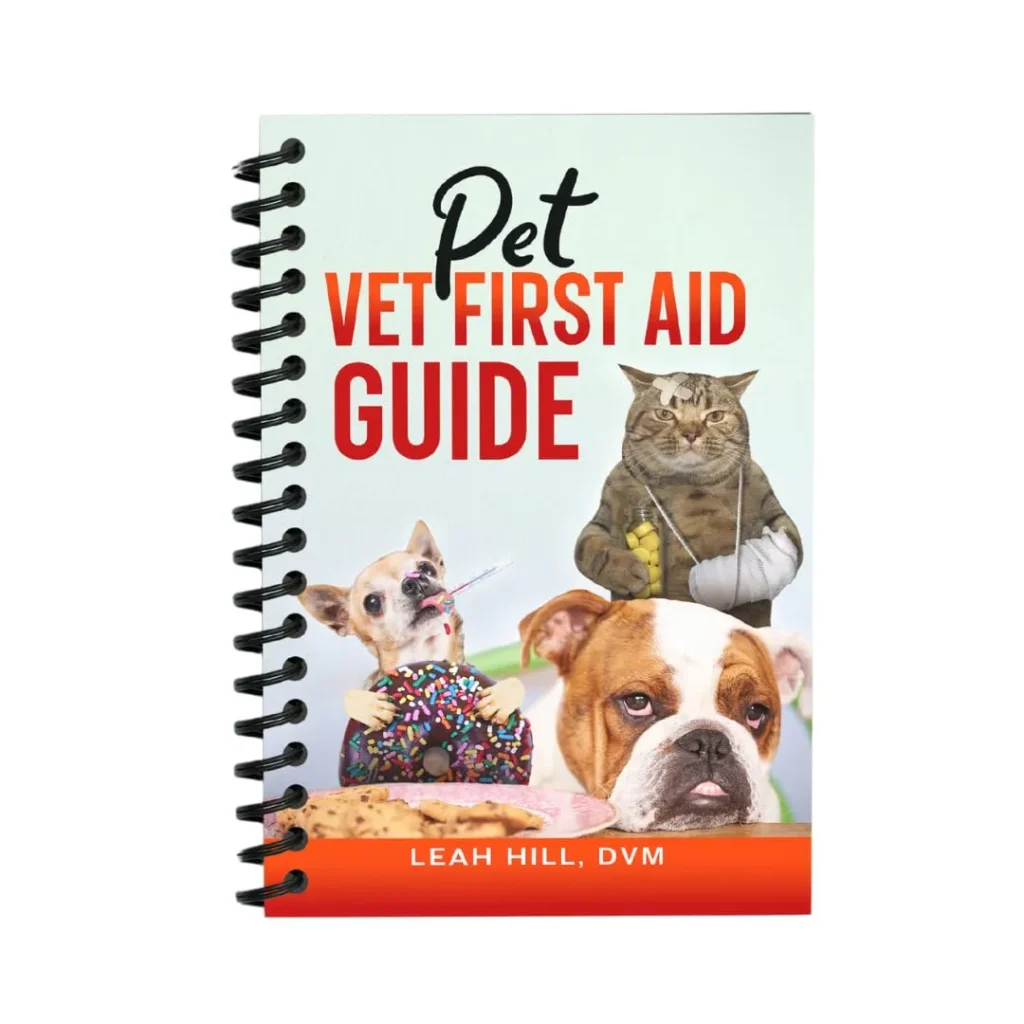
Dog First Aid Training: Where to Learn
If you’re serious about learning dog first aid, there are plenty of resources out there. Here are a few options to consider:
- Local Animal Shelters or Rescue Groups: Many organizations offer first aid classes for pet owners. Check with your local shelter to see if they have any upcoming workshops.
- Veterinary Clinics: Some vets offer first aid courses for pet owners. This can be a great way to learn directly from professionals.
- Online Courses: Various online platforms offer dog first aid training. Websites like Red Cross and Pet First Aid provide comprehensive courses that you can take at your own pace.
- Books and Guides: There are plenty of books on pet first aid. Find one that’s easy to understand and keep it handy for reference.
Investing time in training can make a huge difference in how you respond to emergencies. Plus, it gives you the confidence to handle situations effectively. For a more structured learning path, explore how to administer first aid to dogs.
Conclusion
In summary, being prepared for dog emergencies is not just a skill; it’s a lifesaver.
With the right knowledge and tools in your corner, you can handle anything life throws at your furry friend. From knowing the basics of first aid to understanding when to call the vet, you hold the power to make a real difference.
Remember, staying calm and having a well-stocked first aid kit can turn a potentially scary situation into a manageable one. So, equip yourself with these insights, and don’t hesitate to seek more resources.
Your dog’s health and happiness depend on it!
For more tips and tricks on keeping your beloved pet safe, dive into more articles at Tech Havela. Happy reading!
Frequently Asked Questions
What is The Essential Guide to Dog First Aid?
The Essential Guide to Dog First Aid is a simple resource. It helps you learn how to care for your dog in an emergency.
Why is dog first aid important?
Dog first aid is super important. It can save your dog’s life and help during a scary moment until you get to the vet.
What are basic first aid skills for dogs?
You should know how to check for breathing, control bleeding, and do CPR. These skills can be lifesavers.
How do I treat a dog’s cut or scrape?
Clean the wound gently with water. Apply a bandage if needed. Keep an eye on it for signs of infection.
What should I do if my dog swallows something harmful?
Stay calm! Call your vet right away. They’ll tell you what to do next.
How do I tell if my dog is in pain?
Look for signs like whining, hiding, or not wanting to eat. If you suspect pain, consult your vet.
Where can I learn more about dog first aid?
You can check out The Essential Guide to Dog First Aid online. Classes are also available at local pet stores.
**Sidnir Vieira**
Founder of TechHavela
A passionate pet and tech content creator, helping dog owners across the U.S. make smarter decisions for their furry friends.

